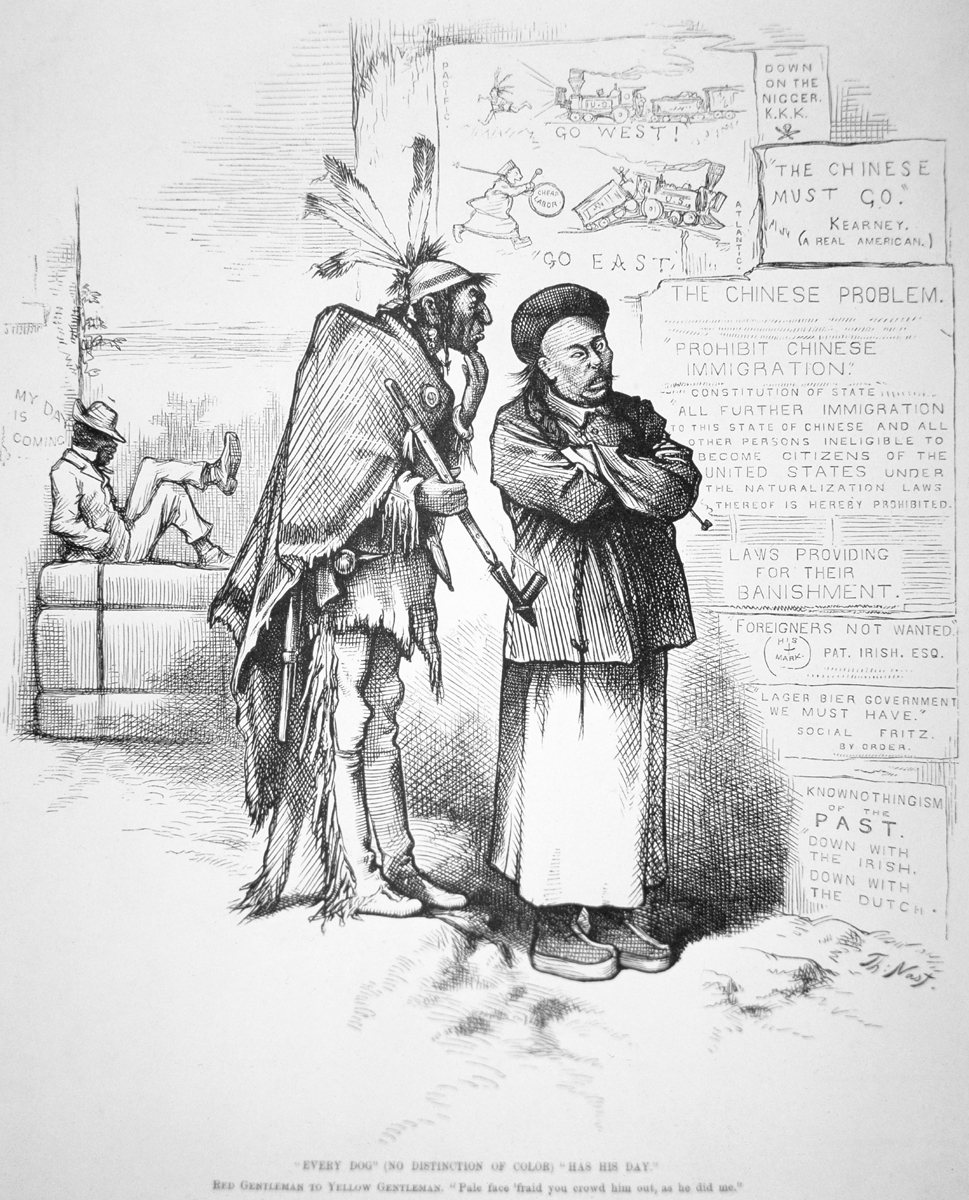Thomas Nast, “Every Dog” (No Distinction of Color) “Has His Day,” Harper’s Weekly, February 8, 1879
Thomas Nast (1840–1902) was the most influential political cartoonist of the day, perhaps in all of American history. Many of his cartoons appeared in Harper’s Weekly, a popular political magazine. Note how Nast uses the posters on the wall to the right of the central figures to contextualize the anti-Chinese movement within the history of American intolerance. “Go West” is a phrase associated with newspaper publisher and editor Horace Greeley, who proclaimed in the years before the Civil War, “Go west, young man, go west!” When analyzing the images within this illustration, consider the broader context of western expansion and how, as Stephen A. Douglas, the Illinois senator who tirelessly advocated a transcontinental railroad, explained in a letter in 1853, “the tide of emigration and civilization must be permitted to roll onward until it rushes through the passes of the mountains, and spreads over the plains, and mingles with the waters of the Pacific.”

Evaluating the Evidence
Question
How are the three figures depicted in this cartoon (Native American, Chinese worker, and freed slave) portrayed? What overall message do you think Nash seeks to convey to his readers?
Question
The wall to the right of the central figures is covered with handbills that refer to other instances of U.S. racial, ethnic, and religious intolerance, including a handbill from the Ku Klux Klan and a “Chinese Must Go” poster signed by Denis Kearney, author of the first document in this unit. How do these handbills deepen, complicate, and/or confuse your understanding of the cartoon?